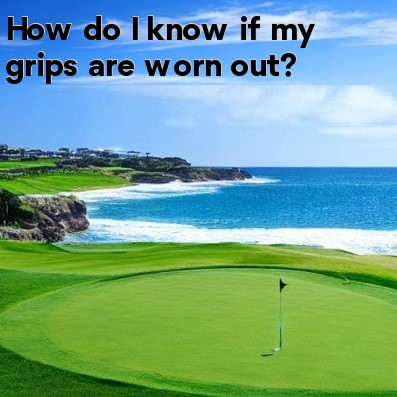
In Golf, How Do I Know If My Grips Are Worn Out?
Golf grips are an essential component of your golf clubs that directly affect your performance on the course. Over time, grips tend to wear out and lose their original quality and effectiveness. It is important to be able to recognize when your grips are worn out and in need of replacement. Here are some key signs to look out for:
- Visible Wear: The first thing you should check is if there is any visible wear on your grips. Look for signs of cracking, peeling, or fraying. Worn-out grips can also become smooth and shiny, providing less traction.
- Loss of Tackiness: As grips age, they tend to lose their tackiness, which affects your ability to maintain a firm hold on the club. If you find that your hands are slipping during your swing, it may be time to replace your grips.
- Lack of Comfort: Grips that are worn out may feel harder and less comfortable in your hands. You may experience discomfort or even blisters after a round of golf. If your grips are no longer providing the cushioning and comfort they once did, it is a good indication to get them replaced.
- Inconsistent Shots: When your grips are worn out, it can affect your swing and lead to inconsistencies in your shots. If you notice that your shots are becoming more inconsistent or you are struggling to control the club, it could be due to your worn-out grips.
- Lifespan: It is important to keep track of the lifespan of your grips. Most golf grips tend to last around 40 to 60 rounds, depending on how frequently you play and the conditions you play in. If you have been using the same grips for a long time and cannot remember when you last changed them, it is a good idea to inspect them closely and consider replacing them.
Regularly inspecting your grips and noticing these signs will help you determine if your grips are worn out and need replacement. It is recommended to replace your grips every 1-2 years, depending on your usage and how often you play.
Replacing your golf grips not only ensures better performance but also enhances your comfort and control over the club. It is a relatively simple process and can be done at your local golf shop or by yourself if you have the necessary tools.
When choosing new grips, consider factors such as grip size, material, and texture. Grip size is especially crucial as it determines how your hands and fingers grip the club. Using the right-sized grips will promote a consistent and confident swing.
In conclusion, being able to recognize when your golf grips are worn out is essential for maintaining optimal performance in the game. By regularly inspecting your grips for visible wear, loss of tackiness, discomfort, inconsistent shots, and knowing their lifespan, you can make an informed decision on when to replace them. Don't overlook the importance of good grips as they play a significant role in your overall golfing experience.





